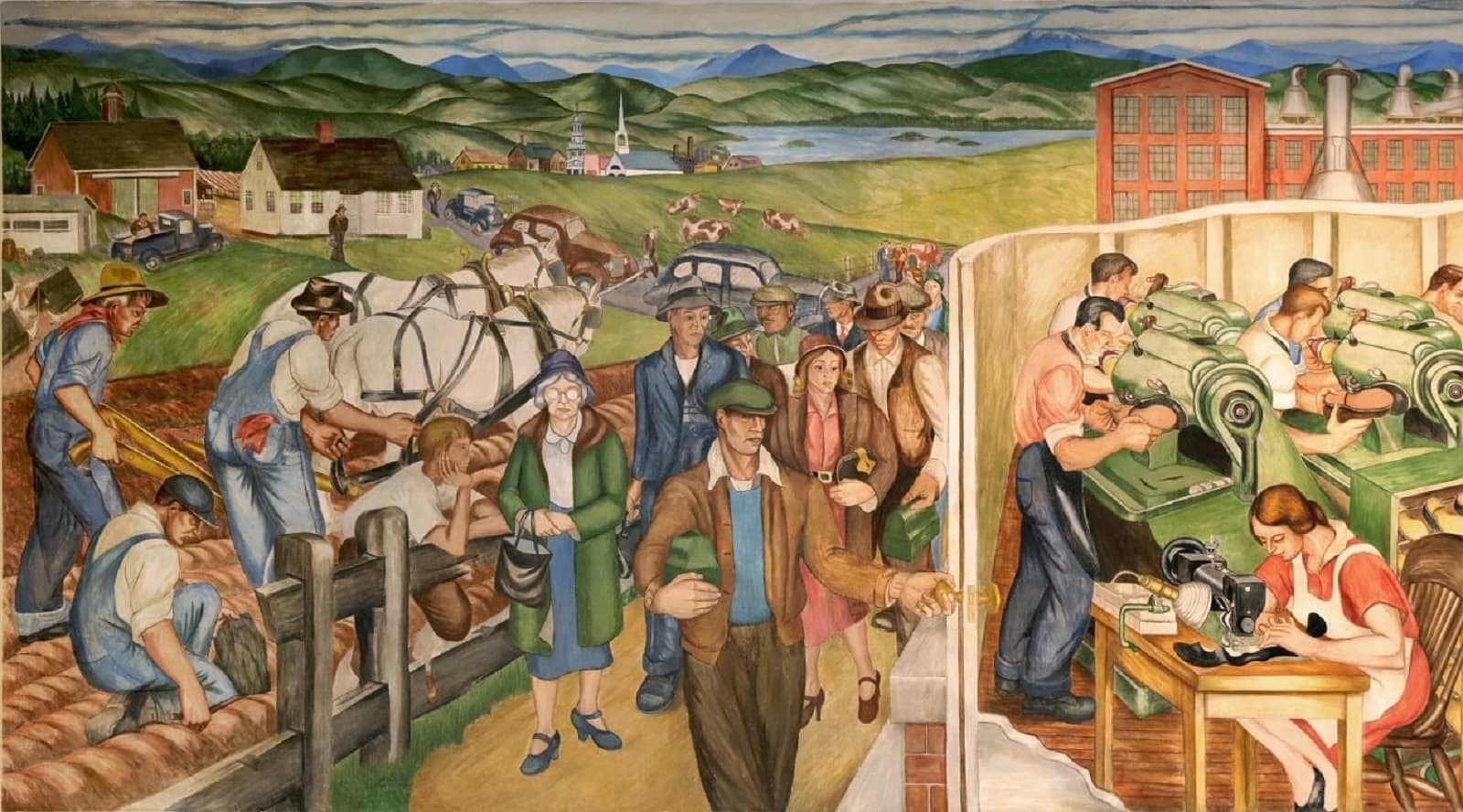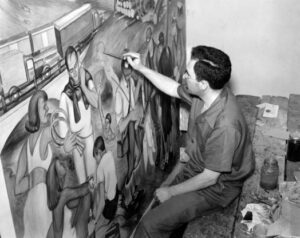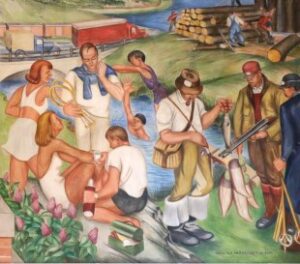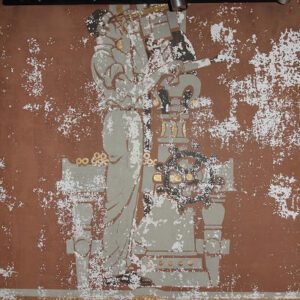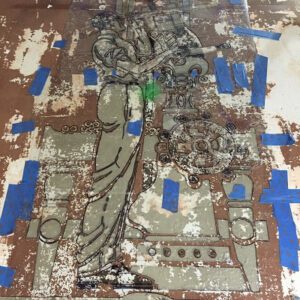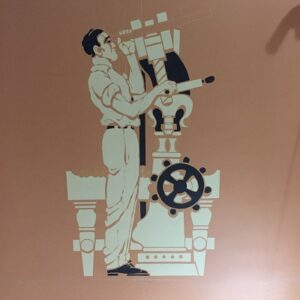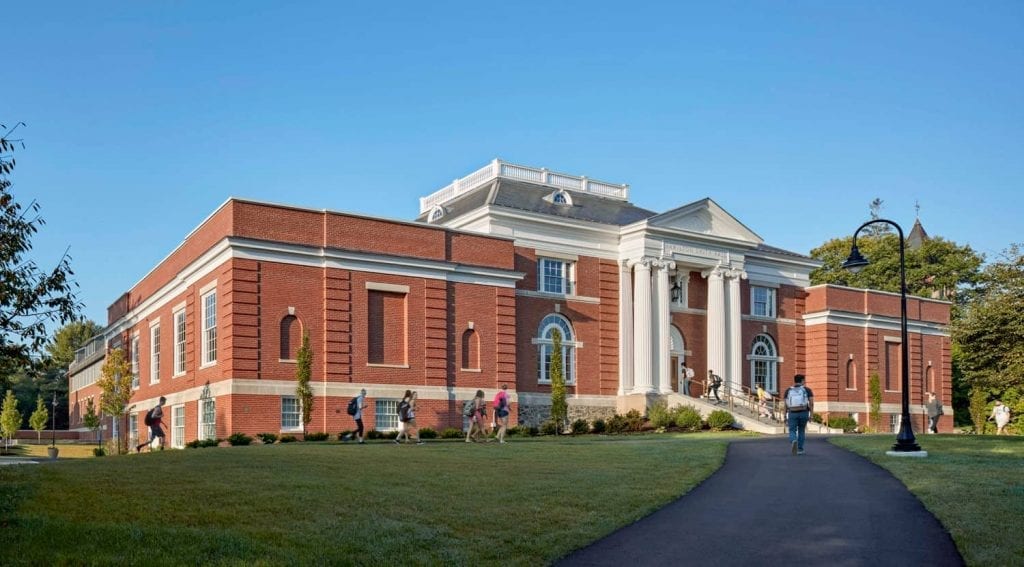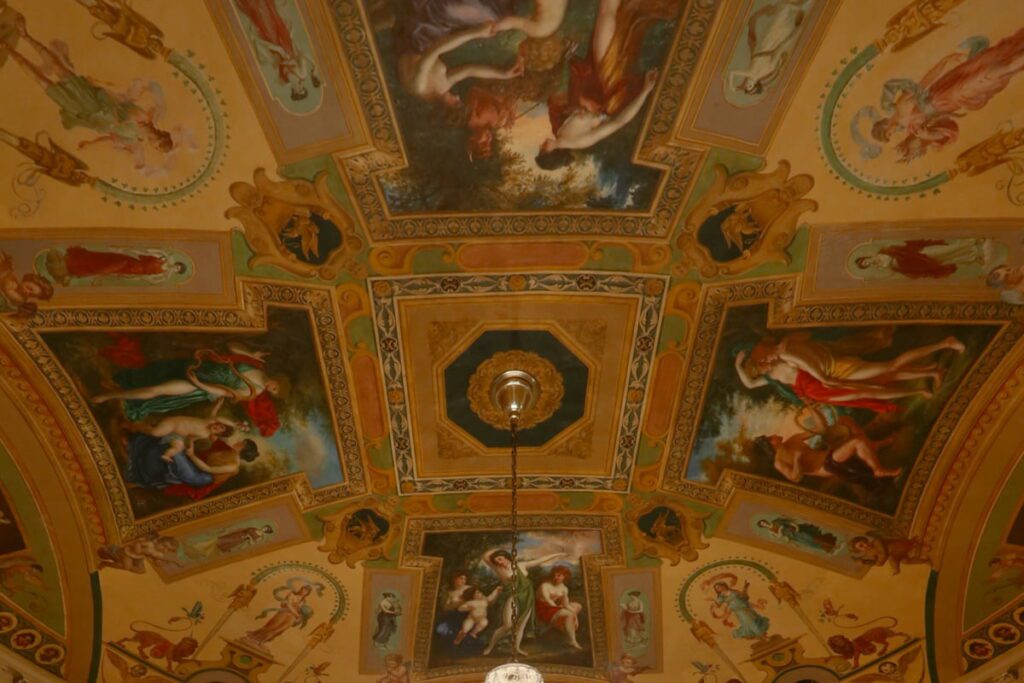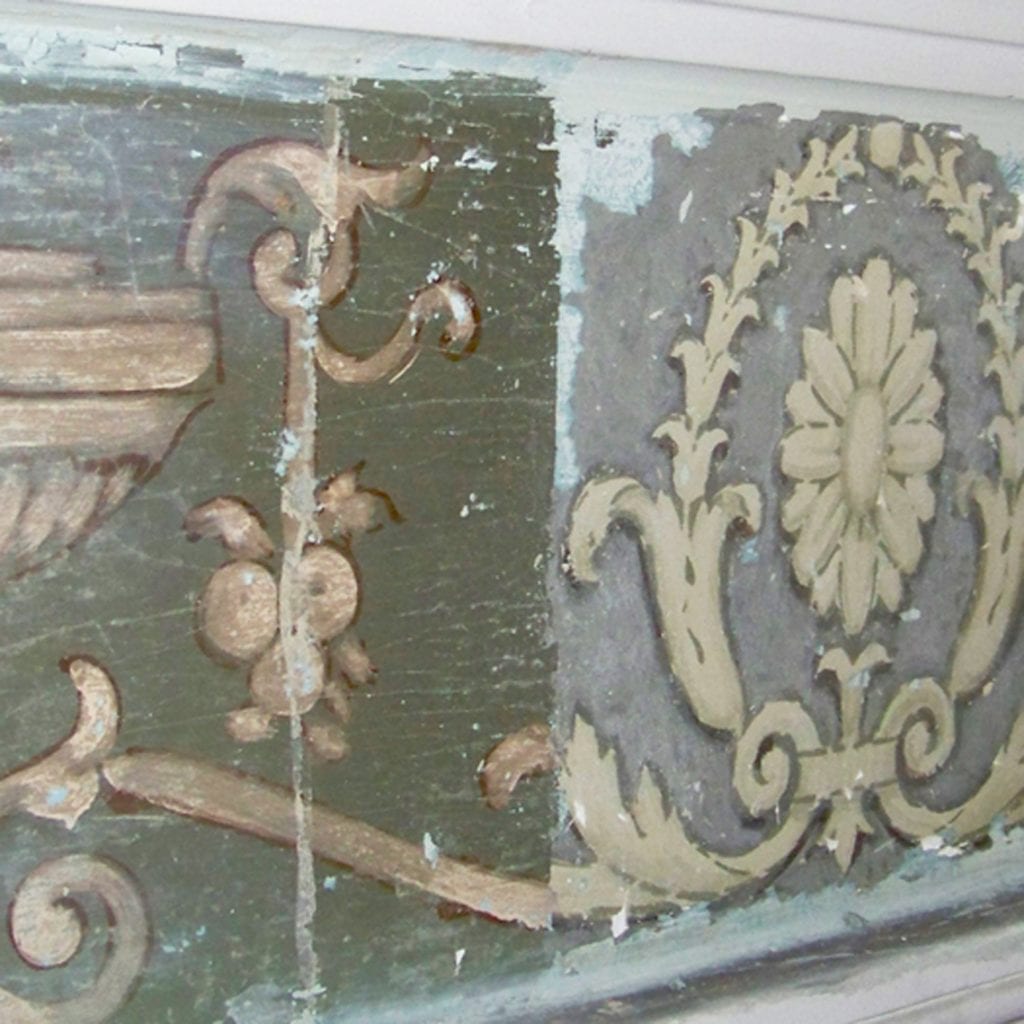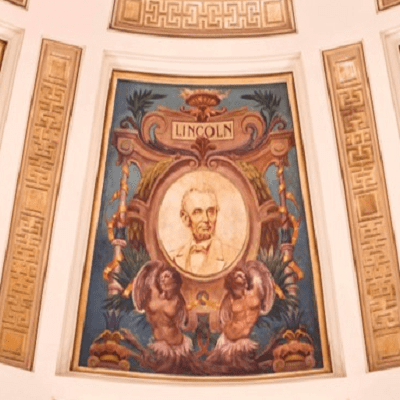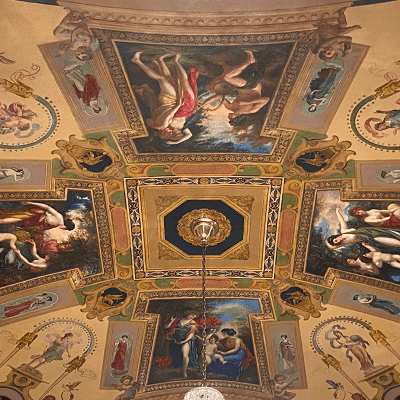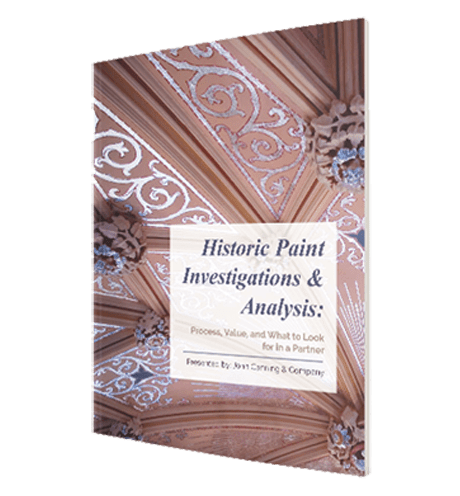Conducting a conditions assessment is the first step in returning a historical mural to its former glory. Conditions assessments are comprehensive studies of the existing condition of a historic building, architectural element, fine art, or mural. These investigative reports provide an understanding of the architectural or design element in question, supported by thorough documentation. A mural conditions assessment can help answer a client’s questions, ranging from project planning phases and sequencing to budgeting, scheduling, and restoration and preservation work. Even if conservation work is not planned, a mural conditions assessment can help document what exists and inform ongoing maintenance, stabilization, and future damage protection.
Research
When it comes to the conservation of murals, there is the challenge of discovering and piecing together a puzzle to put it back to the way it was. Doing so requires an interruption of the original intent of the work, along with the assessment and investigation of the pieces. The history of a mural provides a window into the importance and connection of the artwork to the place it was painted. The when, where, why, and how are all incredibly important during a conditions assessment. When did the artist paint the mural? Where is the mural located within a building or space? Is that its original location? Why did the artist paint the mural? Was it commissioned work or an act of personal passion? How was the mural created? What is the substrate, and what materials did the artist use to create the mural? Has the mural been conserved or restored before this current effort? Knowing the answers to these questions allows for an informed conservation effort.
Arthur Esner painting Industry in New Hampshire mural in 1940, found during research for the restoration of the murals at Hamilton Smith Hall at the University of New Hampshire (left) and restored section of the Industry in New Hampshire mural (right).
Test Results
On-site testing and lab analysis can help determine the substrate and original materials used to create the mural. Microscopy analysis allows conservators to see the layers of paint, identifying the earliest layer and original colors. During these paint tests, conservators will also test the samples for lead. Lead is a common additive in historic paints, and unfortunately, many historic buildings and murals have the potential to contain lead. By uncovering the presence of lead, the conservators can take the appropriate remediation steps to contain the lead and safely conserve the mural. Varnishes and other finishes will be identified in this section and will aid in the recommendations section when deciding what approach to use when conserving the mural. If mural conservation is possible, conservation cleaning tests are done during this phase to identify the materials and their reactions to different cleaning solutions. The conservator will discuss the on-site testing and lab analysis results in deeper detail in the final recommendation section of the assessment.
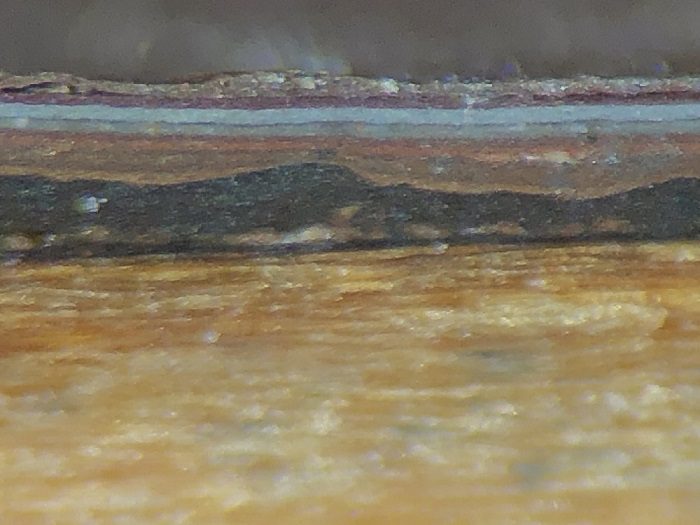
Microscopy of a paint sample depicting layers of paint and the substrate.
Documentation
Documentation of the current state of the mural will be done methodically by a historic preservation professional. The physical condition of the mural as it exists at that moment will be meticulously recorded in this section and will include photos of each damaged area, as well as annotated diagrams or overlay mappings if necessary to accurately depict the conditions. The noted forms of damage may include cracking, paint flaking, water damage, areas of paint loss, and previously overpainted sections. The conservator will note any areas that need further, in-depth inspection, including historic paint analysis, plaster analysis, or materials testing when putting together a art condition report.
Before, during, and after of the restoration of a mural at the Winchester Arms Building. The center image shows the use of a clear overlay to document the design for use during the restoration.
Recommendations
Recommendations for mural conservation are determined using the information gained from testing, analysis, and research. This section will include recommendations for conserving the mural, including whether the mural should be conserved in situ or removed and conserved in the studio. This decision depends upon the structural integrity of the mural and the substrate. For example, if the mural was painted on canvas, then adhered to the wall, it could be possible to remove the canvas from the wall to restore the mural in the studio. However, if the mural was created directly on the wall surface, like plaster, the mural cannot be removed and must be conserved on-site. The conservator will make recommendations for conservation methods, including possible cleaning solutions tailored to the needs of the materials used in the mural. The conservation methods will vary based on the substrate as well, as paint on canvas will require a method that will not harm the paint or the canvas, and the same goes for other substrates. The goal of conservation is to never harm the historical element; therefore, all methods should be the gentlest method catered to the specific project at hand. In the case that conservation is not planned, the recommendations will provide tips for ongoing maintenance and information for stabilization if needed. This section can also include information about project sequencing and planning, budgeting, and schedules if requested by the client.
Conditions assessments should only be performed by professionals with experience in mural conservation and restoration. The right team will consist of professional associates of the American Institute for the Conservation of Historic and Artistic Works (AIC). Our team of experts has years of experience in these trades and has conducted research and testing at historic locations to create conditions assessments for clients across the country. Canning is guided by the principle “do no harm” and advances that principle by providing reversible treatments and supplying owners with thorough documentation of research, conditions, actions taken, and materials used. Our principles are members of the AIC, and with over 45 years of experience, we are one of the nation’s experts in historic restoration, conservation, and preservation. If you have a mural in need of conservation and would like to learn more about assessing its conditions, please request a consultation to connect with one of our professional consultants.

